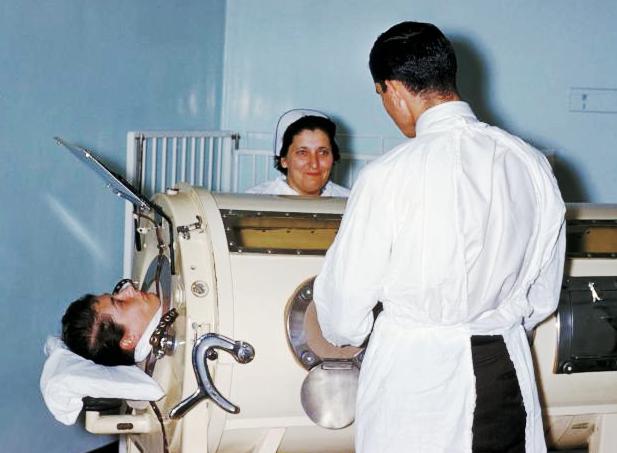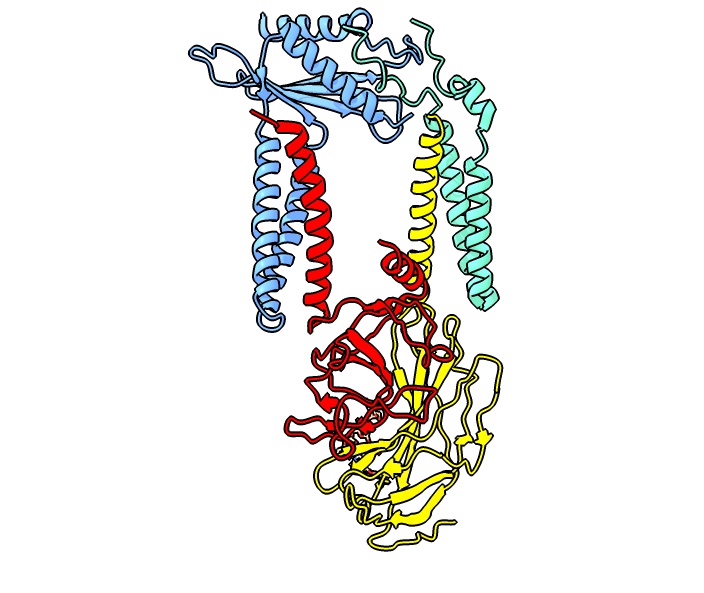|
Dobrava Virus
Dobrava-Belgrade virus (DOBV) is the main cause of hemorrhagic fever with renal syndrome (HFRS) in southern Europe. In its natural reservoirs, DOBV causes a persistent, asymptomatic infection and is spread through excretions, fighting, and grooming. Humans can become infected by inhaling aerosols that contain rodent saliva, urine, or feces, as well as through bites and scratches. In humans, infection causes such as fever and headache, as well as the appearance of spots on the skin and renal symptoms such as kidney swelling, excess protein in urine, blood in urine, decreased urine production, and kidney failure. Acute respiratory distress syndrome occurs in about 10% of cases. DOBV has four genotypes: Dobrava virus, Sochi virus, Kurkino virus, and Saaremaa virus. These genotypes are native to different rodent species and vary in how severe of illness they cause. Dobrava virus is carried by the yellow-necked mouse (''Apodemus flavicollis'') and has moderate-to-severe symptoms with a ... [...More Info...] [...Related Items...] OR: [Wikipedia] [Google] [Baidu] |
Hemorrhagic Fever With Renal Syndrome
Hantavirus hemorrhagic fever with renal syndrome (HFRS) is a hemorrhagic fever caused by hantaviruses. Symptoms usually occur 12–16 days after exposure to the virus and come in five distinct phases: febrile, hypotensive, low urine production (oliguric), high urine production (diuretic), and recovery. Early symptoms include headache, lower back pain, nausea, vomiting, diarrhea, bloody stool, the appearance of spots on the skin, bleeding in the respiratory tract, and renal symptoms such as kidney swelling, excess protein in urine, and blood in urine. During the hypotensive phase, blood pressure lowers due to microvascular leakage. Renal failure then causes the diuretic phase, before recovering and increasing urine production as disease progression improves. The severity of symptoms varies depending on which virus causes HFRS and ranges from a mild illness to severe. The case fatality rate likewise varies by virus, at less than 1% up to 15%. HFRS is caused mainly by four viruses in ... [...More Info...] [...Related Items...] OR: [Wikipedia] [Google] [Baidu] |
Endothelial Cell
The endothelium (: endothelia) is a single layer of squamous endothelial cells that line the interior surface of blood vessels and lymphatic vessels. The endothelium forms an interface between circulating blood or lymph in the lumen and the rest of the vessel wall. Endothelial cells in direct contact with blood are called vascular endothelial cells whereas those in direct contact with lymph are known as lymphatic endothelial cells. Vascular endothelial cells line the entire circulatory system, from the heart to the smallest capillaries. These cells have unique functions that include fluid filtration, such as in the glomerulus of the kidney, blood vessel tone, hemostasis, neutrophil recruitment, and hormone trafficking. Endothelium of the interior surfaces of the heart chambers is called endocardium. An impaired function can lead to serious health issues throughout the body. Structure The endothelium is a thin layer of single flat ( squamous) cells that line the ... [...More Info...] [...Related Items...] OR: [Wikipedia] [Google] [Baidu] |
Orthohantavirus
''Orthohantavirus'' is a genus of viruses that includes all hantaviruses (family ''Hantaviridae'') that cause disease in humans. Orthohantaviruses, hereafter referred to as hantaviruses, are naturally found primarily in rodents. In general, each hantavirus is carried by one rodent species and each rodent that carries a hantavirus carries one hantavirus species. Hantaviruses in their natural reservoirs usually cause an asymptomatic, persistent infection. In humans, however, hantaviruses cause two diseases: hemorrhagic fever with renal syndrome (HFRS) and hantavirus pulmonary syndrome (HPS). HFRS is mainly caused by hantaviruses in Africa, Asia, and Europe, called Old World hantaviruses, and HPS is usually caused by hantaviruses in the Americas, called New World hantaviruses. Hantaviruses are transmitted mainly through aerosols and droplets that contain rodent excretions, as well as through contaminated food, bites, and scratches. Environmental factors such as rainfall, temperature, ... [...More Info...] [...Related Items...] OR: [Wikipedia] [Google] [Baidu] |
Hantaviridae
''Hantaviridae'' is a family of viruses in the order ''Bunyavirales''. It is named for the Hantan River area in South Korea South Korea, officially the Republic of Korea (ROK), is a country in East Asia. It constitutes the southern half of the Korea, Korean Peninsula and borders North Korea along the Korean Demilitarized Zone, with the Yellow Sea to the west and t ... where an early outbreak of one of its species was observed. Taxonomy The family contains the following subfamilies and genera (-''virinae'' denotes subfamily and -''virus'' denotes genus): * '' Actantavirinae'' ** '' Actinovirus'' ** '' Percilovirus'' * '' Agantavirinae'' ** '' Agnathovirus'' * '' Mammantavirinae'' ** '' Loanvirus'' ** '' Mobatvirus'' ** '' Orthohantavirus'' ** '' Thottimvirus'' * '' Repantavirinae'' ** '' Reptillovirus'' References {{Taxonbar, from=Q29001075 Virus families Bunyavirales ... [...More Info...] [...Related Items...] OR: [Wikipedia] [Google] [Baidu] |
Mechanical Ventilation
Mechanical ventilation or assisted ventilation is the Medicine, medical term for using a ventilator, ventilator machine to fully or partially provide artificial ventilation. Mechanical ventilation helps move air into and out of the lungs, with the main goal of helping the delivery of oxygen and removal of carbon dioxide. Mechanical ventilation is used for many reasons, including to protect the airway due to mechanical or neurologic cause, to ensure adequate oxygenation, or to remove excess carbon dioxide from the lungs. Various healthcare providers are involved with the use of mechanical ventilation and people who require ventilators are typically monitored in an intensive care unit. Mechanical ventilation is termed invasive if it involves an instrument to create an airway that is placed inside the trachea. This is done through an endotracheal tube or nasotracheal tube. For non-invasive ventilation in people who are conscious, face or nasal masks are used. The two main types o ... [...More Info...] [...Related Items...] OR: [Wikipedia] [Google] [Baidu] |
Continuous Renal Replacement Therapy
Hemofiltration, also haemofiltration, is a renal replacement therapy which is used in the intensive care setting. It is usually used to treat acute kidney injury (AKI), but may be of benefit in multiple organ dysfunction syndrome or sepsis. During hemofiltration, a patient's blood is passed through a set of tubing (a ''filtration circuit'') via a machine to a semipermeable membrane (the ''filter'') where waste products and water (collectively called ''ultrafiltrate'') are removed by convection. Replacement fluid is added and the blood is returned to the patient. As in dialysis, in hemofiltration one achieves movement of solutes across a semi-permeable membrane. However, solute movement with hemofiltration is governed by convection rather than by diffusion. With hemofiltration, dialysate is not used. Instead, a positive hydrostatic pressure drives water and solutes across the filter membrane from the blood compartment to the filtrate compartment, from which it is drained. Solutes, ... [...More Info...] [...Related Items...] OR: [Wikipedia] [Google] [Baidu] |
Reassortment
Reassortment is the mixing of the genetic material of a species into new combinations in different individuals. The product of reassortment is called a reassortant. It is particularly used when two similar viruses that are infecting the same cell exchange genetic material. More specifically, it refers to the swapping of entire segments of the genome, which only occurs between viruses with segmented genomes. (All known viruses with segmented genomes are RNA viruses.) Flu virus The classical example of reassortment is seen in the influenza viruses, whose genomes consist of eight distinct segments of RNA. These segments act like mini-chromosomes, and each time a flu virus is assembled, it requires one copy of each segment. If a single host (a human, a chicken, or other animal) is infected by two different strains of the influenza virus, then it is possible that new assembled viral particles will be created from segments whose origin is mixed, some coming from one strain and some ... [...More Info...] [...Related Items...] OR: [Wikipedia] [Google] [Baidu] |
Genetic Recombination
Genetic recombination (also known as genetic reshuffling) is the exchange of genetic material between different organisms which leads to production of offspring with combinations of traits that differ from those found in either parent. In eukaryotes, genetic recombination during meiosis can lead to a novel set of genetic information that can be further passed on from parents to offspring. Most recombination occurs naturally and can be classified into two types: (1) ''interchromosomal'' recombination, occurring through independent assortment of alleles whose loci are on different but homologous chromosomes (random orientation of pairs of homologous chromosomes in meiosis I); & (2) ''intrachromosomal'' recombination, occurring through crossing over. During meiosis in eukaryotes, genetic recombination involves the pairing of homologous chromosomes. This may be followed by information transfer between the chromosomes. The information transfer may occur without physical exchange (a ... [...More Info...] [...Related Items...] OR: [Wikipedia] [Google] [Baidu] |
Mutation
In biology, a mutation is an alteration in the nucleic acid sequence of the genome of an organism, virus, or extrachromosomal DNA. Viral genomes contain either DNA or RNA. Mutations result from errors during DNA or viral replication, mitosis, or meiosis or other types of damage to DNA (such as pyrimidine dimers caused by exposure to ultraviolet radiation), which then may undergo error-prone repair (especially microhomology-mediated end joining), cause an error during other forms of repair, or cause an error during replication ( translesion synthesis). Mutations may also result from substitution, insertion or deletion of segments of DNA due to mobile genetic elements. Mutations may or may not produce detectable changes in the observable characteristics ( phenotype) of an organism. Mutations play a part in both normal and abnormal biological processes including: evolution, cancer, and the development of the immune system, including junctional diversity. Mutati ... [...More Info...] [...Related Items...] OR: [Wikipedia] [Google] [Baidu] |
Saaremaa
Saaremaa (; ) is the largest and most populous island in Estonia. Measuring , its population is 31,435 (as of January 2020). The main island of the West Estonian archipelago (Moonsund archipelago), it is located in the Baltic Sea, south of Hiiumaa island and northwest of the Gulf of Riga. The administrative centre of the island, and of the Saare ''maakond'' (county), is the town of Kuressaare. From the 13th century until the first half of the 20th century, the island of Saaremaa was known in most of the world by variants of its other historical name Ösel. Etymology Saaremaa was called ''Eysýsla'' in the Icelandic sagas and other early medieval Scandinavian sources (Old Norse: , meaning "the island district"), and named in contrast with ''Aðalsýsla'' ("the great district") or the Estonian mainland. The island is called in modern Estonian and in Finnish — literally "land of the isle" or "land of the island",Toomse, Liine. "10 Estonian Islands You Should Visit." http ... [...More Info...] [...Related Items...] OR: [Wikipedia] [Google] [Baidu] |
Signal Peptidase
Signal peptidases are enzymes that convert secretory and some membrane proteins to their mature or pro forms by cleaving their signal peptides from their N-termini. Signal peptidases were initially observed in endoplasmic reticulum (ER)-derived membrane fractions isolated from mouse myeloma cells. The key observation by César Milstein and colleagues was that immunoglobulin light chains were produced in a higher molecular weight form, which became processed by the ER membrane fraction. This finding was directly followed by the discovery of the translocation machinery. Signal peptidases are also found in prokaryotes A prokaryote (; less commonly spelled procaryote) is a single-celled organism whose cell lacks a nucleus and other membrane-bound organelles. The word ''prokaryote'' comes from the Ancient Greek (), meaning 'before', and (), meaning 'nut' ... as well as the protein import machinery of mitochondria and chloroplasts. All signal peptidases described s ... [...More Info...] [...Related Items...] OR: [Wikipedia] [Google] [Baidu] |
Messenger RNA
In molecular biology, messenger ribonucleic acid (mRNA) is a single-stranded molecule of RNA that corresponds to the genetic sequence of a gene, and is read by a ribosome in the process of synthesizing a protein. mRNA is created during the process of transcription, where an enzyme (RNA polymerase) converts the gene into primary transcript mRNA (also known as pre-mRNA). This pre-mRNA usually still contains introns, regions that will not go on to code for the final amino acid sequence. These are removed in the process of RNA splicing, leaving only exons, regions that will encode the protein. This exon sequence constitutes mature mRNA. Mature mRNA is then read by the ribosome, and the ribosome creates the protein utilizing amino acids carried by transfer RNA (tRNA). This process is known as translation. All of these processes form part of the central dogma of molecular biology, which describes the flow of genetic information in a biological system. As in DNA, genetic inf ... [...More Info...] [...Related Items...] OR: [Wikipedia] [Google] [Baidu] |






